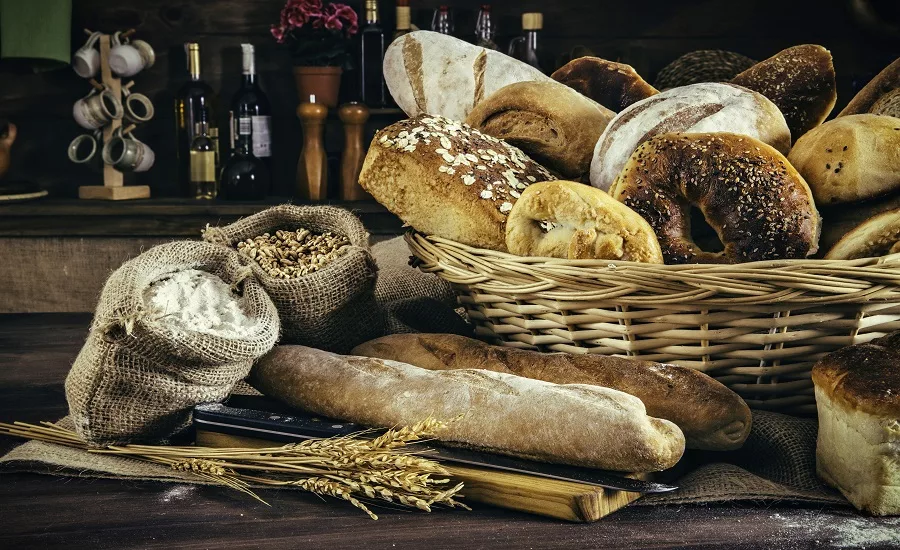Got Malt? An Ancient Food with Modern Benefits

Despite its 10,000-year history, malted barley’s complete nutritional properties have only recently been appreciated by nutritional science. Malt extract is produced by mixing malted barley with hot water and allowing the natural enzymes to break down the starch in the whole grain into sugars, mostly maltose. The mash’s insoluble parts are filtered out, but most of the whole grain’s nutrients remain.
Maltose is Exhibit A for the case that not all sugars are created equal. Many added sugars contain significant amounts of fructose, which among other drawbacks can adversely affects the liver, where it is processed. High-fructose corn syrup contains upwards of 50%, while table sugar and even sweeteners that sound healthy, like organic cane syrup, also are 50% fructose.
Sponsored by

The sugar in malt extract is mostly maltose, which presents no such dangers. Maltose breaks down into glucose and can then be used by virtually every cell in the body. In the brain, it is the preferred energy source. Muscle cells import glucose from the blood for a quick energy boost. Certain cells, such as red blood cells, can only use glucose for energy.
But malt extract is more than just maltose. Unlike other refined sweeteners such as table sugar, brown sugar, corn syrup, rice syrup, and tapioca syrup, not to mention artificial sweeteners like aspartame, malt extract is rich in nutrition. It contains protein; essential amino acids; soluble fibers; vitamins B2, B3, and B6; the minerals iron, calcium, and potassium; and microminerals magnesium, manganese, and selenium. Refined sugar and artificial sweeteners contain none of these nutrients.
Despite this, malt extract’s most potent nutritional punch may be its antioxidants—in particular polyphenols, whose health benefits include anti-inflammation, anti-tumor, anti-cancer, anti-microbial, and anti-allergic properties. Gram for gram, malt extract has five times the antioxidant power of fresh broccoli.
At least 20 different phenols have been discovered in substantial quantity in malt. These include flavan-3-ols, proanthocyanidin oligomers, hydroxycinnamic acid derivatives, and flavonols. Flavan-3-ols, in particular, have robust research showing anti-cancer effects. Proanthocyanidin oligomers have been shown to be antidiabetic and neuroprotective, and there is active research into the antioxidant and cardioprotective properties of flavonols.
Other major contributors to malt’s antioxidant properties are catechin, caffeic acid, ferulic acid, and sinapic acid. Caffeic acid has been linked to bone health, and ferulic acid to skin health.
While malt extract changes the starches into more easily digestible simple carbohydrates, it has also been shown to increase the antioxidant power of the original grain-barley. Phenolic compounds that are chemically bound and biologically unavailable are released, further increasing the antioxidant effect.
Additional nutritional power derives from the class of molecules called Maillard reaction products. Bakers have always appreciated how amino acids and sugars in malt extract combine to produce a brownish color and enhanced flavor profile. Now, it also is understood that byproducts of the Maillard reaction have antioxidant effects and could provide protection against heart disease specifically.
Gut Health
The more we learn about the intestinal microbiome’s complexity, the more we realize its effect on our health. Its metabolic byproducts can be toxic or beneficial, and include the synthesis of vitamins, amino acids, and short-chain fatty acids. Intriguingly, malt extract can play an important role in the maintenance of our companion biome.
Probiotics serve as fertilizer and pesticide for gut flora. However, because probiotics themselves are alive, they can be difficult to preserve in an active state until consumption. This is where malt extract comes in. Survival of probiotic bacteria during storage is a major problem for dairy products, such as yogurt, cheeses, and fermented milks. It has been shown that such bacteria survive better in malt extracts compared to other extracts during refrigerated storage.
Malt extract also has been shown to protect the viability of the probiotics L. plantarum, L. acidophilus and L. reuteri under acidic conditions typically found in yogurt, kombucha, and other fermented foods. Survival of L. acidophilus increases significantly even at low concentrations of maltose, while L. reuteri stability thrives in the presence of maltose. Glucose does not bring these benefits. Likewise, L. fermentum cultured in malt extract achieves high maximum cell populations via maltose and free amino nitrogen. Malt extract also protects L. plantarum under gastrointestinal tract conditions, ensuring that organisms survive passage to the gut. Malt extracts were found to significantly enhance the probiotic’s viability compared to other extracts and control conditions.
Malt extract is truly a sweetener with substance. It has no fructose, the sugar found in sugar cane sweeteners and highfructose corn syrup. Compared to other glucose syrups like rice syrup, corn syrup, wheat syrup, and tapioca syrup, it is abundant with nutrients.
About the Author
Amy Targan is President of Malt Products Corp., a manufacturer of malted barley extract, oat extract and other natural, nutritious sweeteners. www.maltproducts.com.